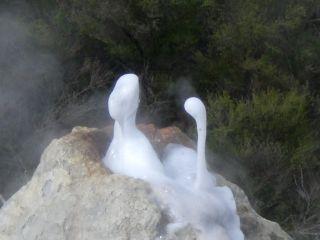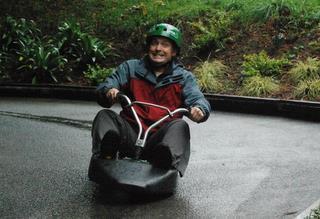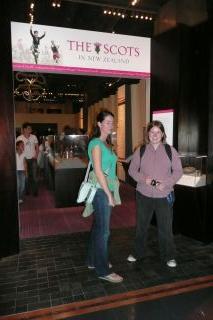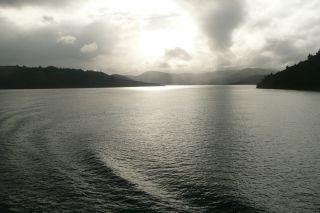
Today has been an action packed day, it must have been as we’ve all broken our daily photo taking record: Cat with 227, Caroline on 238, and me on a whopping 308, bringing my total to over 12,000. I pity the fool who contemplates a slide show of our trip!
We’d camped at the thermal pools of Waikite, lots of outdoor pools fed from the “boiling river”, although we didn’t think that was literal, a short walk put us straight. The spa is fed from a massive pool about 4 metres across of fiercely boiling water, at some points it boiled so hard it looked like it was going to erupt into a geyser, not something to stand near! Testimony to the fact that the earth’s crust is very thin round these parts.
That only whet our apetites for the thermal wonderland that is Wai-o-Tapo, and first treat was the Lady Knox geyser, promising to erupt at 10.15am. As we’d read our guide book, we knew that the ranger triggers the geyser, but I swear some people were standing with camera ready, checking their watches… The wait also gave me the time to come up with that gem of a blog title, ah, simple things!
The ranger dropped soap powder into the mouth of the geyser, and within seconds foam was billowing from the top. A few seconds later and water was spurting out, giving us our second shower of the day. The rest of the park was as a wonderland as advertised, craters, pools and rocks in a kaleidoscope of colours, all bubbling away and steaming. The champagne pool fizzed as it boiled, and the rim of the pool was bright orange, before dropping off deep to the bottom of the extinct volcano. The final pool was an odd luminescent yellow-green, like some big vat of lime shower gel. Suplhur is very smelly, but can make some crazy colours! At the exit, the mud pools plopped away merrily, occasionally a mini mud eruption would occur in the middle of the lake, and hats off to Caroline who snapped one of the bigger plops mid flow.
With all the thermal pools we’ve visited, it was time for a change to plain old water, and so we stopped for lunch at Aratiatia dam. Now, as you’ve come to expect, this is not an ordinary dam, at 2pm the sirens wailed and the floodgates opened, literally. 80,000 litres of water a second gushed out, and gradually the river level rose. The Aratiatia rapids downstream changed from a trickle to a raging torrent. Even more bizzarre is that the river is turned on just for the spectators to see what the rapids are like in full flow, no other reason. Compare that to Australia, or most other countries for that matter, I can’t imagine they’d use water quite like that! After half an hour the river is turned off again, until the next time.
Further upstream is the Huka Falls, a paltry 10 metre drop, but impressive due to the sheer amount of water flowing, varying depending on the amount of rain, but on the order of 1 tonne per second. It’s easy to see why they can turn the Aratiatia rapids on, the dam would probably overflow if they didn’t!
As dusk was fast approaching there was just enough time to fit in one more visit, this time to Craters of the Moon. The whole landscape was covered in steam rising from various vents, from impossibly small holes to ponds, all billowing white vapour. In many ways similar to what we’ve been looking at for the past two days, but concentrated into one area without trees, and the low light levels added to the atmospheric feeling.
All together it’s been a fine day, and we’ve managed to squeeze quite a lot in, no wonder so many photos were taken!


